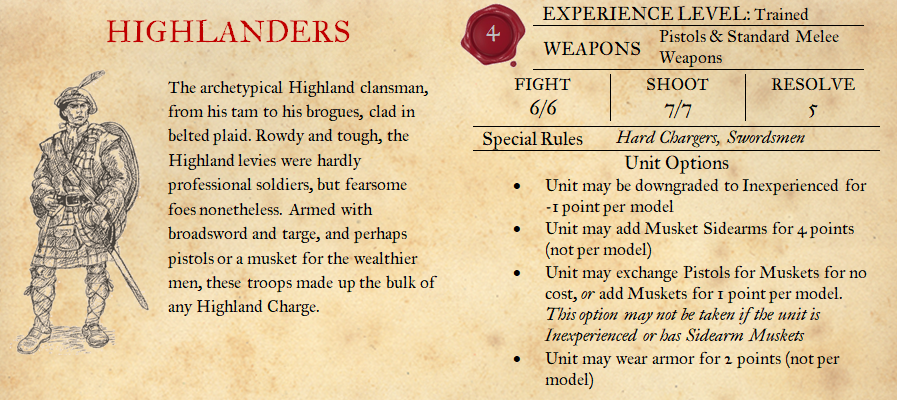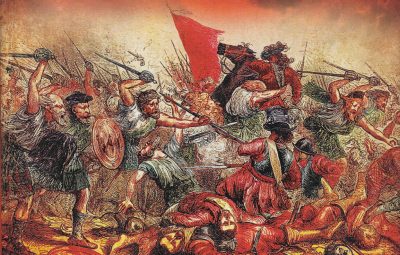A Harvest Day’s Work – Killiecrankie for Blood and Plunder
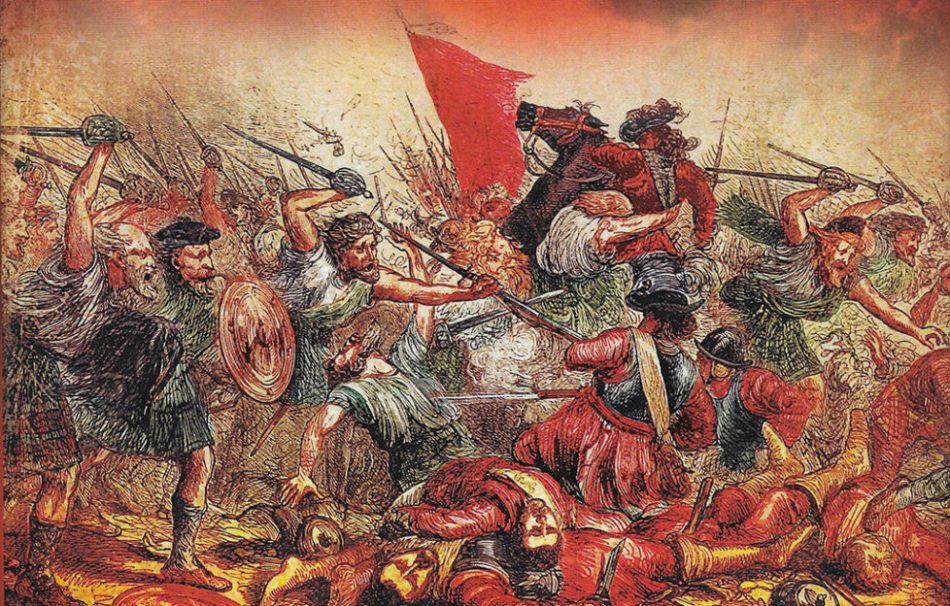
By Tyler
Ever since the Scottish nationality made an appearance in Blood & Plunder’s ‘No Peace Beyond the Line,’ players have been asking about the historical validity of kilted Scotsmen clashing broadswords with the pirates and privateers of the New World. And simply put? It didn’t happen. Aside from outliers like the legendary (emphasis: legendary) Redlegs Greaves, the stereotypical Scottish highlander never settled beyond the rocky glens of his homeland. Settlements like the doomed New Caledonia and Stuart’s Town were founded by Covenanters from the lowlands. So if we can’t bring the highlanders to the New World, what if we brought Blood & Plunder, to the old one?
The Battle of Killiecrankie
July 27th, 2022 marks the 333rd anniversary of the Battle of Killiecrankie. The battle pitted highlanders of the first Jacobite Rebellion against the Williamite soldiers of England, in a sterling example of the famous ‘Highland Charge’. Outside of Scotland, this battle is often overshadowed by the battle of Culloden in 1746. Doubtless, thanks to pop-culture like the series Outlander. But while the battle of Culloden was a defeat and the end of an era, Killiecrankie was a stunning victory – a highpoint of the rebellion, and perhaps the highpoint of the entire Jacobite cause.
There are many sources for you to learn about the complicated political situation in England which led to this battle. I personally recommend this brief and entertaining video by Scottish historian Bruce Fummey. But this is a wargaming blog, and we’re here for wargaming!
The Battle of Killiecrankie was fought between two unequal forces. The Jacobite force was commanded by John Graham of Claverhouse, recently declared 1st Viscount Dundee and known to history as ‘Bonnie Dundee.’ He had learned that a Williamite force of 4,000 men under Hugh Mackay would be moving through the narrow, two-mile-long Pass of Killiecrankie. Dundee marched quickly to intercept, and arrayed his army of 2,500 on the slopes of Creag Eallich, overlooking the pass.
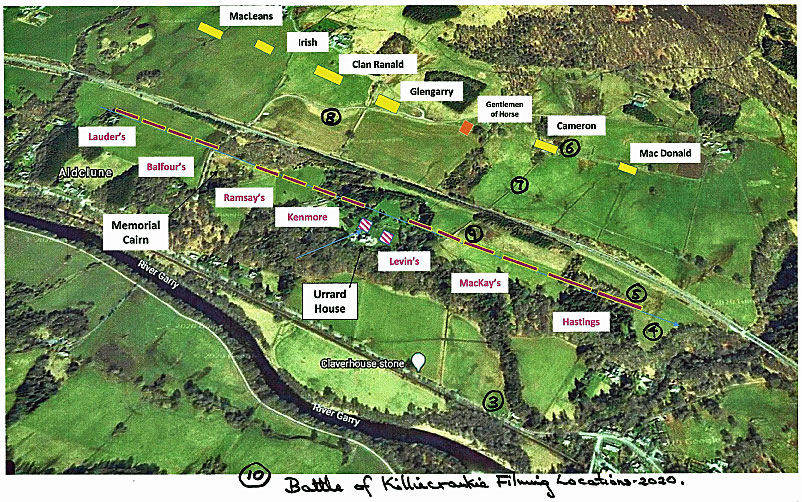
The backbone of Graham’s force were Highland clans. Ironically, Graham himself hailed from the Lowlands. It was his opponent, Hugh Mackay, who was the Highland lord. The Highlanders were fierce soldiers, but fickle. They were little concerned with politics beyond their own clans, and usually only engaged in raids and battles if there was plunder to be had. The hardscrabble living which had made them tough, also meant that they were poorly equipped. Few had muskets. Fewer still had ammunition – many marched off to battle with barely a dozen shots for their muskets.
Graham’s force also included some better-armed troops; veteran Scottish soldiers from the wars on the continent, and a troop of dismounted dragoons from Ireland, as well as a few volunteer cavalry.
Dundee had begged the Highlanders for “one Shear Darg” – a harvest day’s work – for King James. At Killiecrankie, that harvest would prove a bloody one. Bonnie Dundee ordered the famous ‘highland charge’ just before nightfall. The highlanders doffed their kilts and charged pell-mell down the slope of Creag Eallich. They stopped only briefly, to fire their muskets at close range, before casting them aside and drawing their broadswords. Some of the men even carried claymores in one of the last reported instances of the massive sword’s use on the battlefield.
Mackay had formed his men in thin lines of only three ranks, to maximize firepower and avoid being outflanked. This proved disastrous when the men were caught off guard by the suddenness of the charge. Without time to fit their plug bayonets, many of the Government troops fled. Those who stood their ground were quickly overwhelmed by the brutality of the highlanders. They were pushed back and then shattered, fleeing to the river. Any soldier who could not ford, swim, or leap the river was cut down.
In the end, almost 2000 government soldiers were dead or wounded, including Hugh Mackay’s younger brother James. The highlanders lost 600 men, but among the slain was Bonnie Dundee. He had been shot beneath the arm while standing in his horse’s stirrups and encouraging his faltering horsemen during the charge. As he lay dying, he asked one of his men how the battle progressed,
“Well for King James, but I’m sorry for your Lordship,” the man answered. Ever the loyal subject, Graham replied,
“If it goes well for him, it matters the less for me,”
Graham’s passing left the uprising bereft of its most inspiring and charismatic leader. The leader of the Irish contingent, Alexander Cannon took command. After an abortive attack on Dunkeld, the Jacobites retired to winter quarters. The highlanders simply melted away, while cold and starvation claimed many of the Irish soldiers. The following year, Cannon’s replacement Thomas Buchanan could only rally 800 men, and the army was destroyed at the battle of Cromdale.
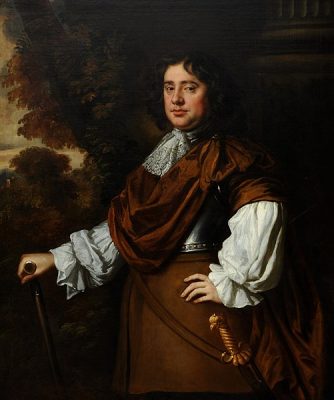
Refighting Killiecrankie
If you wish to refight this battle, I recommend using the ‘Breakthrough‘ scenario from page 135 of the core rulebook. Terrain should be deployed sensibly – there’s no need to model the steep slopes of the Creag Eallich, unless you want to.
You can download a force list I’ve created to represent Bonnie Dundee’s army (and any Jacobite army of the period) in a Google Drive folder at the link here
For the Government troops, the Scottish list from No Peace Beyond the Line would work well enough – it’s a good mix of professional and militia-quality troopers. Alternatively, you might wish to look at the new ‘British Army’ faction from ‘Raise the Black’ when it is released. Or when we tease it.
Here are a pair of quick force lists for you, representing the units present on the day of the battle in case you want to go “full regimental” scale. One could argue for using Militia for the Government troops, in order to give a better sense of their greater numbers. The truth is, any government soldier should have been an equal match for the average highlander. The highland victory owed more to their careful choice of ground, and the surprising speed with which they descended onto the Williamite line:
Jacobites ~500pts
John Graham of Claverhouse, 25pts
Clan MacLean, 114pts
>> 6 Veteran Daoin-Uaisle w/ Brace of Pistols, Armor, Clan Chieftain
>> 8 Highlanders w/ Musket Sidearms, Armor
>> 10 Bondsmen w/ Spears
Cannon’s Irish, 48pts
>> 8 European Soldiers w/ Carbines
Clan Ranald & Clan Glengarry, 92pts each
>> 2x 6 Daoin-Uaisle w/ Armor, Clan Chieftain
>> 2x 8 Highlanders w/ Armor
>> 2x 10 Bondsmen
Graham’s Lifeguard, 30pts
>> 6 Trained European Militia Cavalry
Cameron Highland Regiment, 52pts
>> 8 European Soldiers w/ Plug Bayonets
MacDonalds of Sleat, 48pts
>> 8 Inexperienced Highlanders w/ Clan Chieftain
>> 10 Bondsmen
Government Forces: ~500pts
Hugh Mackay – Seasoned European Commander, 25pts
Barthold Balfour – Officer, 8pts
Lauder’s Fusiliers, 52pts
>>8x Musketeers w/ Firelock Muskets & Plug Bayonets
Balfour’s & Ramsay’s Regiments, 62pts each
>> 8x Veteran European Soldiers w/ Plug Bayonets & Grenadoes
Kenmore’s Regiment, 52pts
>> 8x Musketeers w/ Plug Bayonets
Artillery Battery, 25pts
>> 5 Trained Artillery Crew w/ Light Field Gun
Cavalry Detachments, 30pts each
>> 2x 6 Trained European Militia Cavalry
Leven’s Regiment, 44pts
>> 8x Inexperienced Musketeers w/ Plug Bayonets
Mackay’s Regiment, 67pts
>> 8x Veteran European Soldiers w/ Plug Bayonets & Grenadoes, Musician, Standard Bearer
Hasting’s Regiment, 44pts
>> 8x Inexperienced Musketeers w/ Plug Bayonets
So, what do you think about taking ‘Blood & Plunder’ to the European theater? Is it something that you’d like to see more of? Do you think that it’s an avenue Firelock should pursue? Right now, ‘Blood & Plunder’ is usually seen by outsiders as “that pirate game,” when in reality, it covers the whole scope of 17th-century colonial skirmishing. If you’re interested in getting into an excellent game system and perhaps adapting it to your own purposes, as I did, then go check it out at Firelock Games

